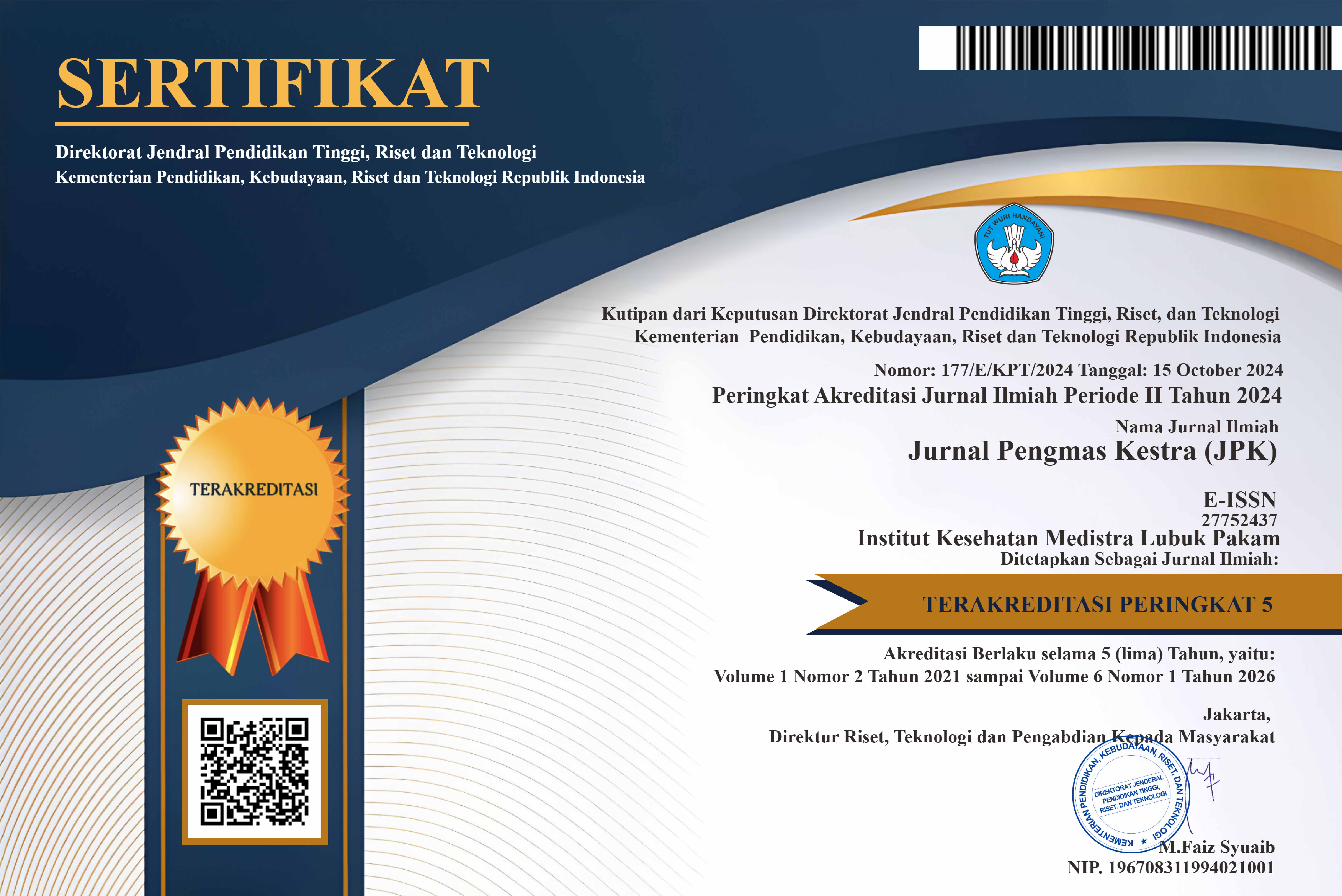EDUKASI TERKAIT FAKTOR YANG MEMPENGARUHI TIMBULNYA NYERI PUNGGUNG BAWAH PADA KARYAWAN WORK FROM HOME DIMASA PANDEMI COVID-19
DOI:
https://doi.org/10.35451/jpk.v1i2.931Keywords:
work from home, low back pain, covid-19Abstract
Work form home (WFH) has the potential to cause musculoskeletal disorders. Musculoskeletal disorders characterized by generalized chronic pain. Based on epidemiological studies and occupational factors can increase the risk of musculoskeletal disorders. The implementation of PkM activities for private employees who are carrying out Work From Home, is carried out through notifications via the internet by filling out a google form with a sample of 30 workers who are at home (work from home) during the COVID 19 pandemic. The results show that the distribution of back pain frequency lower in employees showed a mild pain rate of 58% and moderate pain of 41.9%. There is an increase in knowledge regarding the factors that influence the occurrence of lower back pain in employees working from home during the Covid-19 pandemic
References
Bupa Australia. Managing Back Pain: Get Back on Track. Melbourne, Australia: Bupa Australia; 2014
Deshmukh, T. S. K., & Phadke, S. D. (2020). Impact of Work from Home (WFH) Related Behavioural, Psychological & Ergonomic Factors On Work Related Musculoskeletal Disorders In It Professionals During Covid 19 Pandamic And Need Of Guided Tele Physiotherapy: An Online Social Networking (Osn) Survey”. International Journal of Research and Analytical Reviews (IJRAR), 7(4), 383–397
Guerrero MD, Vanderloo LM, Rhodes RE, Faulkner G, Moore SA, Tremblay MS. Canadian children's and youth's adherence to the 24-h movement guidelines during the COVID-19 pandemic: A decision tree analysis. J Sport Health Sci. 2020;9(4): 313–321. https://doi.org/10.1016/j.jshs.2020.06.005
Hawryluck L, Gold WL, Robinson S, et al. SARS control and psychological effects of quarantine, Toronto, Canada. Emerg Infect Dis. 2004;10(7):1206–1212. https://doi.org/10.3201/eid1007.030703
J. Malchaire, N. Cock, and S. Vergracht, “Review of the factors associated with musculoskeletal problems in epidemiological studies,” Int. Arch. Occup. Environ. Health, vol. 74, no. 2, pp. 79–90,2001
S. Celik, K. Celik, E. Dirimese, N. Tasdemir, T. Arik, and İb. Büyükkara, “Determination of pain in musculoskeletal system reported by office workers and the pain risk factors,” Int. J. Occup. Med. Environ. Health, vol. 31, no. 1, pp. 91–111, 2018.
Q. Feng, S. Liu, L. Yang, M. Xie, and Q. Zhang, “The prevalence of and risk factors associated with musculoskeletal disorders among sonographers in central China: A cross-sectional study,” PLoS One, vol. 11, no. 10, pp. 1–18, 2016.
Yang X, Yu Y, Xu J, et al. Clinical course and outcomes of critically ill patients with SARS-CoV-2 pneumonia in Wuhan, China: a single-centered, retrospective, observational study. Lancet Respir Med. 2020;8(5):475–481. https://doi.org/10.1016/S22132600(20)30079-5)
Zhou, F. et al. Clinical course and risk factors for mortality of adult inpatients with COVID-19 in Wuhan, China: a retrospective cohort study. Lancet 395,1054–1062 (2020)
Downloads
Published
Issue
Section
License
Copyright in each article is the property of the Author.




















